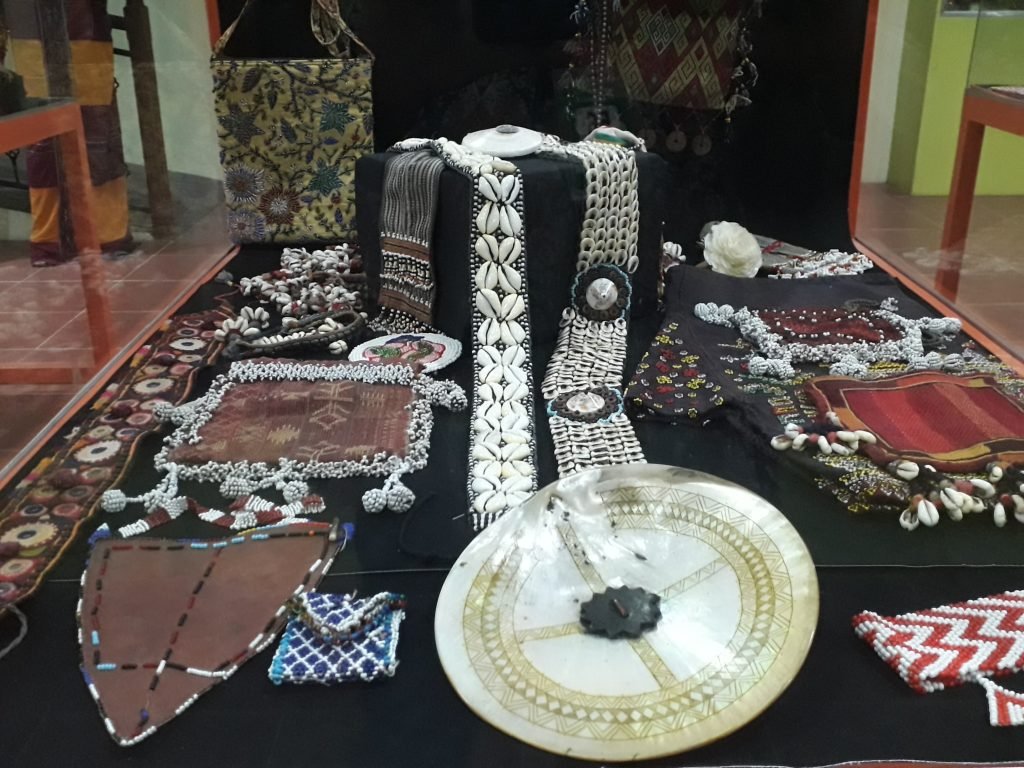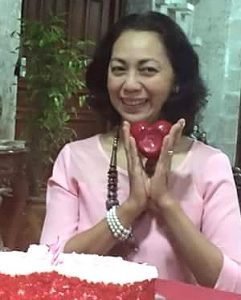The JGM Textile Arts Center is right in Bacolod City in the University of St. La Salle. This collection of textiles from 72 countries is the first international folk textile gallery in the Philippines and probably in Asia. JGM is Jose Garcia Montelibano, the father of the collector Mara Montelibano who opened the center in his honor on March 1, 2012 at the Museo Negrense de la Salle.
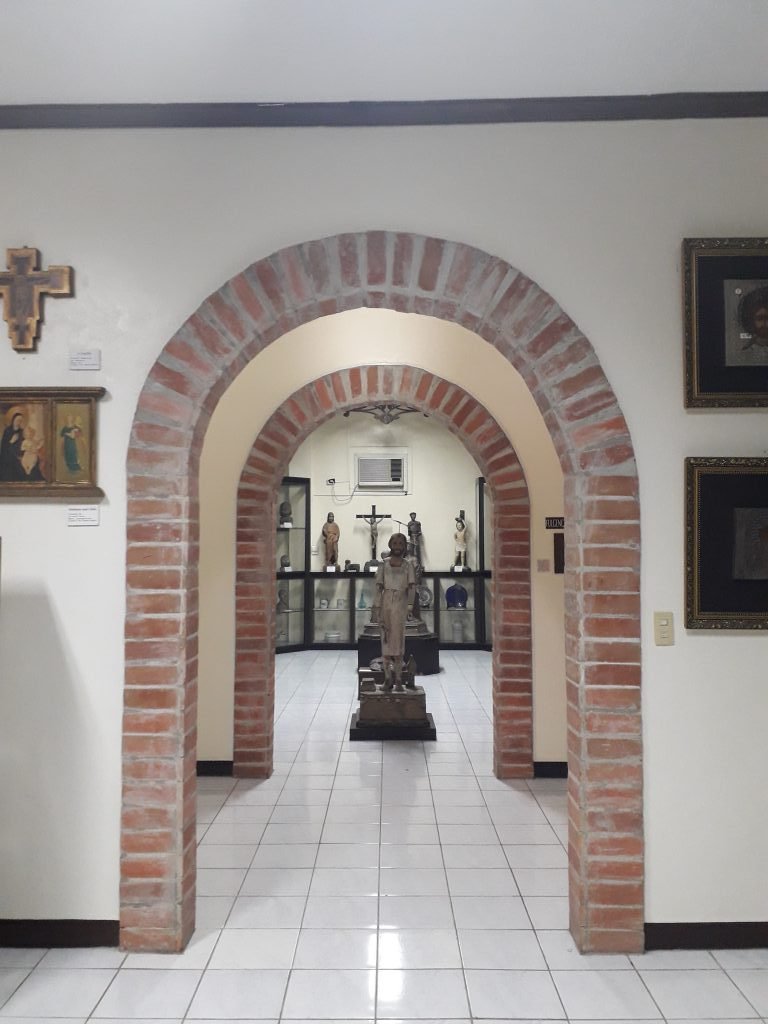


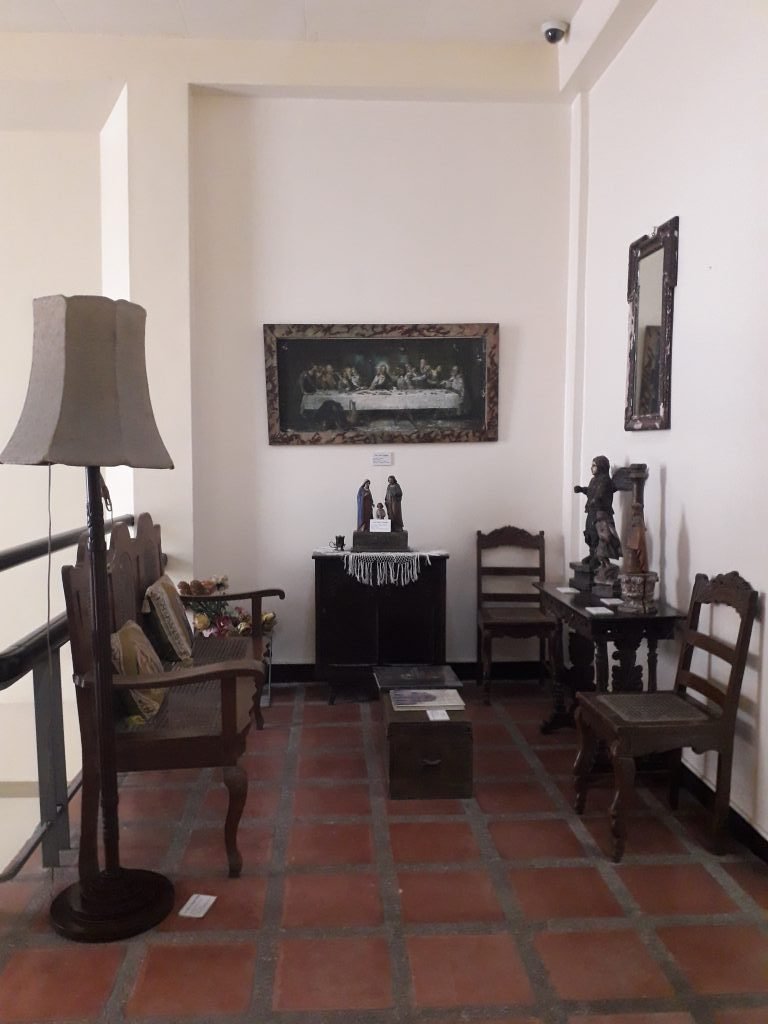

The permanent exhibit covers the following themes: I. Images of the Past, II. Story of Weaving, III. Patterning: Putting design on cloth using colored threads, painting, beads, dyeing, ikat, IV. Patterning through sewing: appliqué, embroidery, quilting, reversed appliqué, patchwork, V. Embellishments, VI. Philippine Weaving Centers, VII. The Filipino identity through influences on textile, VIII. Ethnic Splendor: The Best of Folk Textile.
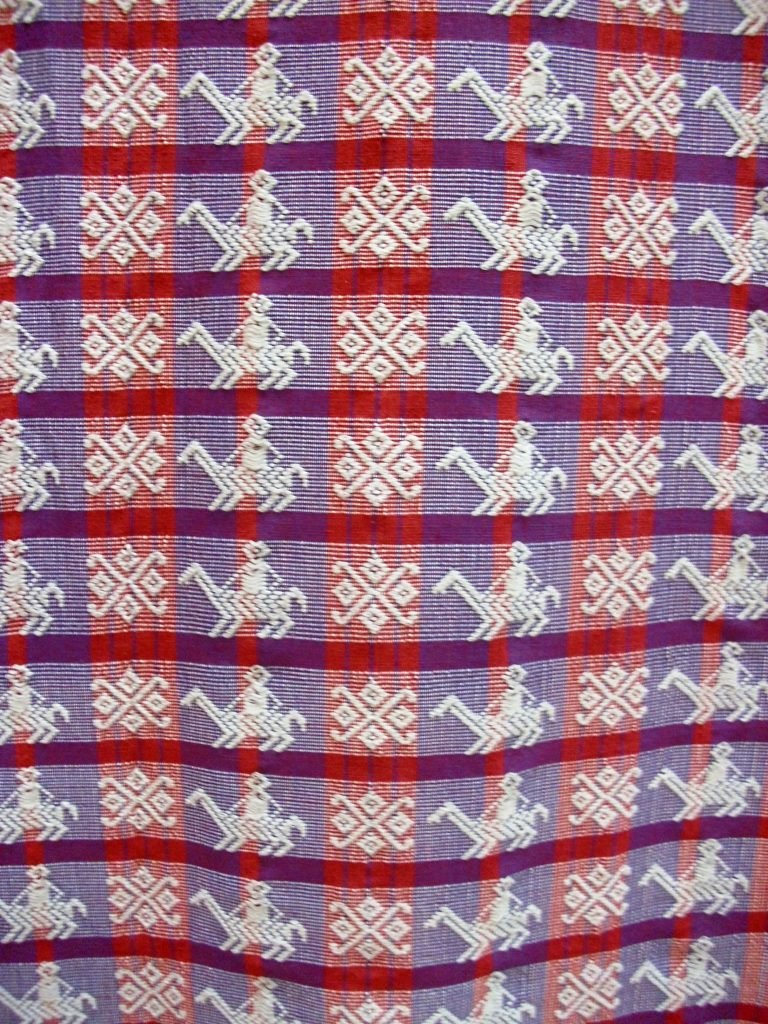
An abel iloko depicting Diego Silang on horseback in supplementary welf
The museum, by opening the exhibit, “hopes to inspire designers and students to incorporate Filipino and other indigenous patterns into their designs. “ The fact is that the weaving industry is a declining one; the museum hopes that “artists and weavers will work together for the revitalization of this unique craft.”

A visit to the long and narrow textile storage room of the museum gave me a glimpse of the tedious care given to the artifacts. Ideally, rooms should be a certain low temperature to preserve the fabrics. Fabrics should be stored flat on a surface as in a custom-made drawers storage system, or the rolled textile system; acid-free paper should be used to wrap the fabrics; and padded hangers are used for hanging clothes to avoid stress on the threads. The methodology of textile preservation requires training, so, the museum staff attended seminars and trainings on Basic Conservation of Movable and Immovable Cultural Heritage, Basic Museology Training, and Collection Management Workshops.

The over 1,600 pieces of items give us a glimpse of the world’s cultures. Here’s an example. An Afghanistan wedding dress with flaring sleeves in purple, green and maroon and a long shirred purple skirt, greets one at the entrance of the center. It has two bead discs with mirrors at the shoulders. It is a century old and in good condition. Here’s an excerpt from Mara’s notes:
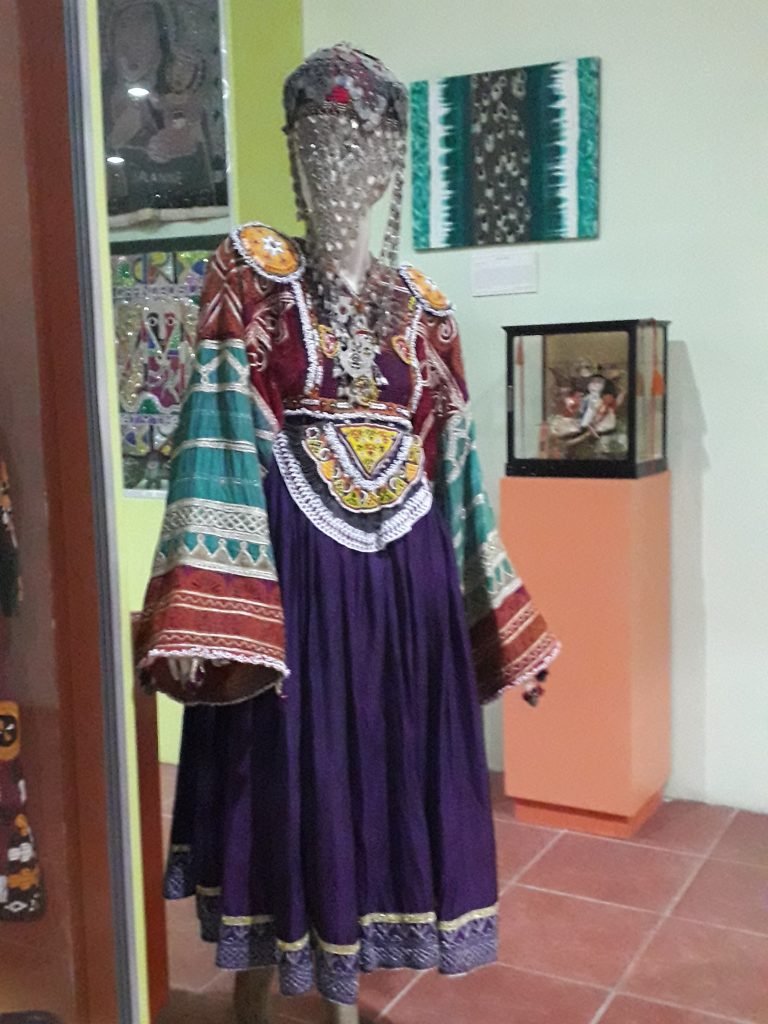
From her childhood, a young girl begins to learn to embroider at the age of eight. She joins the women of her family learning the various techniques that will soon cover her dress, her future husband’s and the children that will surely come thereafter. Aside from personal use, she will also begin to put together her dowry, which will include household furnishing and animal trappings.
The headdress for the wedding dress is made up of a curtain of coins that conceals the bride’s face including her neck for the cascade of coins reaches her upper chest. Coins, in the nomadic culture, are sewn onto clothes for portability of one’s wealth. Also, coins, shiny as they are, are believed to protect the wearer from the evil eye. Children’s protection from the evil eye is especially important, hence, “objects with reflective surfaces, like coins, buttons, bits of mirror, glass beads, and rondels are affixed to their hats, jackets and shirtfronts.”
A guided tour of the premises will also include a discussion on basketry. It is believed that before the invention of the loom, weaving was already done with the making of baskets for all aspects of living including food production, food storage, carrying things, and clothing.
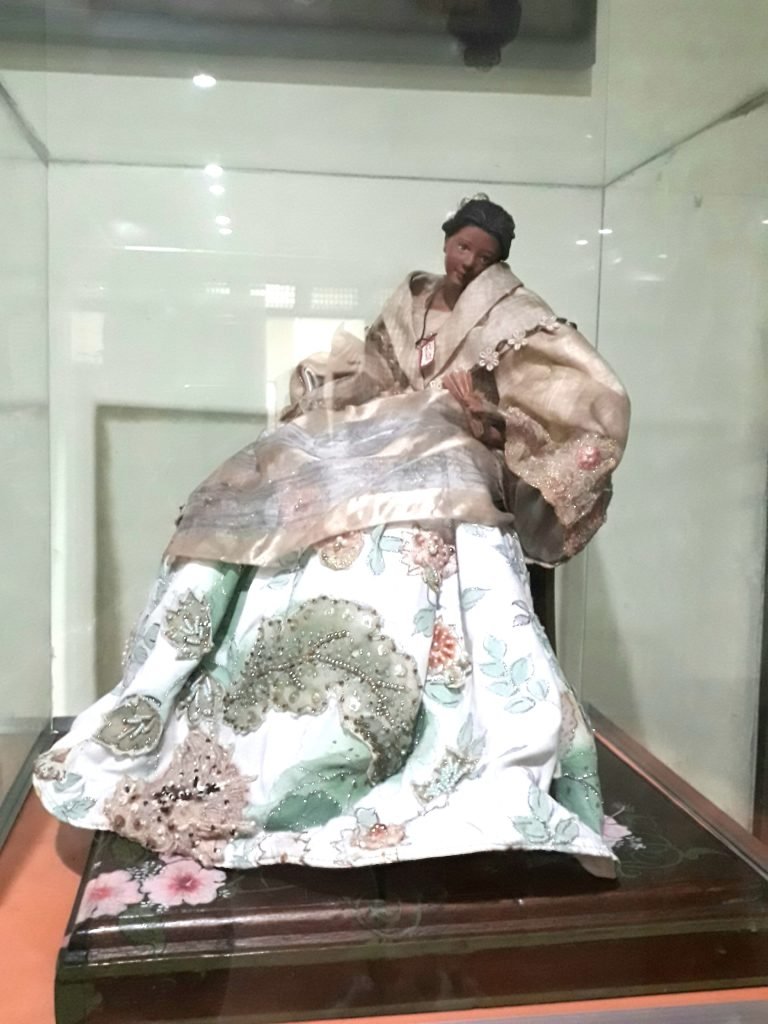
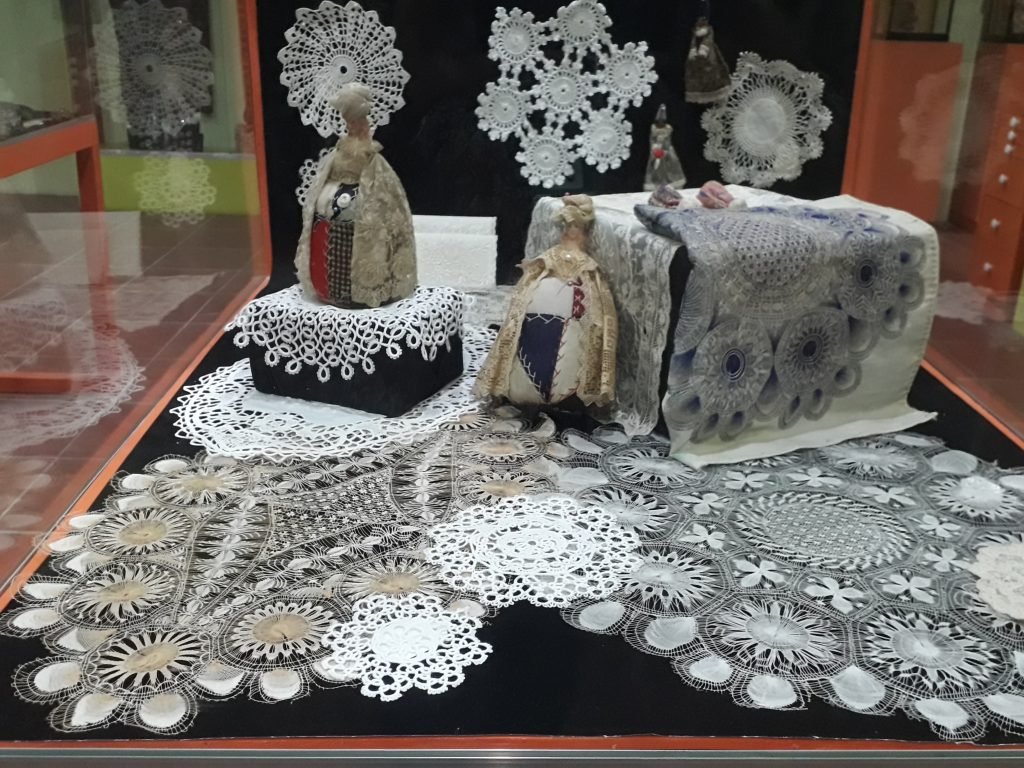
“We hope people will come and visit and seize the opportunity to appreciate hand-made textiles,” said Museum Director Lyn Marie Mapa. “We have such a treasure trove here waiting to be discovered.” The Museo Negrense de la Salle is open from Monday to Friday, 8:00 – 12:00 in the morning; 1:30 -5:00 in the afternoon. Entrance fees are P20 for adults, P10 for students.
